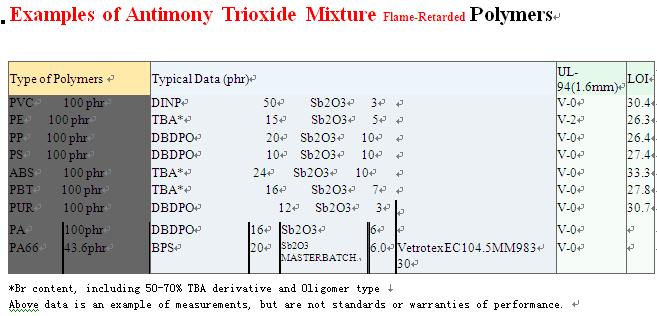
Nelson Bunker Hunt tried it with silver, Marc Rich with aluminum and the Organization for Petroleum Exporting Countries repeatedly with oil, but when it comes to cornering a commodity market, China could give them all a lesson.
.
In about six months months in 1994, prices of antimony, an otherwise obscure metal used as a flame retardant, ceramic additive and a polyester ingredient, tripled amid a sudden dearth of supply.
.
With China now producing up to 80 percent of the world's antimony, traders knew where to start looking for answers when contracted deliveries disappeared and users' stockpiles dwindled.
.
A year after antimony prices first took off, prices remain high - up to $5,000 per metric ton - and the 50 or so traders who make the world market remain mystified: Did antimony prices surge because the two state-owned Chinese companies authorized to export it deliberately squeezed supply? Or was the trading turmoil - also witnessed in world tungsten prices in 1994 and arsenic prices in 1993, two other mineral markets dominated by China - merely a sign of the tough times now affecting most Chinese state industries?
"There's a lot of uncertainty about what China is really up to here," said a London- based metals analyst who asked not to be identified. "It could be that they are holding back supply to get better prices," the analyst said. "Or maybe they are having real problems in production. We just don't know. It's a constant problem with China selling these metals - they're not very forthcoming." The break-up of the Soviet Union isolated antimony mines in Siberia from a giant smelter in newly independent Kyrgyzstan, while low prices in the early 1990s put low-grade mines in Bolivia and South Africa out of business. Yet demand for antimony remains relatively constant despite price movements. Its use rises or falls gradually with world economic growth rates. As buyers are all too well aware, few substitutes exist for antimony in its most common industrial applications. This combination of factors resulted in China, which was investigated for dumping antimony products in the European Union in 1992, grabbing an even larger share of a world market currently estimated at perhaps 70,000 metric tons per year. Now, some traders believe, China is deliberately exploiting its production advantage. "It's not unusual for a metal to go crazy for while," said Katherine Sellery, a Hong Kong- based metals trader who watched antimony soar from $1,800 per metric ton to about $6,000 in October. "But antimony was different, it just kept going up." "One way or another China did a very good job of controlling antimony supply in 1994," said Mrs. Sellery, who, like other antimony traders, conducts business outside of any formal exchange and without hedging instruments such as futures contracts. However, Chinese sellers reject theories that they are manipulating the world markets - for now, anyway. "Of course we are trying to control the market," said Huang Chong-biao, chief antimony trader with China National Non-Ferrous Metals Import & Export Corp. in Beijing, one of two companies authorized to export the lustrous, silvery white metal. "But there are many circumstances preventing us from being able to do it." China's ambitious economic reforms are aimed at making unprofitable state-owned companies compete in the market economy. At the same time, efforts to slow an economy where inflation hit 24 percent in 1994 have included a serious clampdown on bank lending throughout China. Analysts said that combination has slowed investment to a crawl and closed several marginal mines, crimping supply without the official exporters' deliberate intervention. Rising market prices, meanwhile, have created mayhem in China's antimony distribution system as doubling and tripling prices encouraged individual mine managers and savvy middlemen to cut China Non-Ferrous and its rival China National Metals & Minerals Import & Export Corp. out of international deals. Antimony shipments disappeared overnight from individual mines and smelters, traders said. Some sellers reneged on fixed contracts as the price spiraled and smuggling became rampant. The situation was exacerbated by fact that most mines are in China's southern provinces of Guangdong, Guangxi and Hunan, where Beijing's reach has become tenuous in commercial matters in recent years. "We don't sell to anyone in Hong Kong, but warehouses there were full of antimony last year," said Mr. Huang, who blamed production difficulties and unauthorized exporters for China's inability to truly dictate antimony's price. Citing increased production in China, Mr. Huang predicted more "reasonable" prices for antimony for the rest of 1995 - about $4,000 per metric ton - and a calmer market. But if buyers try to stockpile too much or rival producers in Bolivia, South Africa or Thailand dust off plans to activate mines, they run the risk of China flooding the market and putting them out of business, analysts said. "The two official exporters in China don't have the cash themselves to control the market. Discipline is breaking down," said a U.S.- based buyer of antimony, who also requested anonymity. "But China has tasted the success of pricing power. With 80 percent of the market, there is not much anyone can do about it."
src="http://pagead2.googlesyndication.com/pagead/show_ads.js">
Best regards,
**********************
DONGGUAN JIEFU FLAME-RETARDED MATERIALS CO.,LTD
Sam Xu 许彪
Sales Engineer
Tel: 86-755-83474911
Fax: 86-755-83474980
Mobile:13929211059
E-mail: xubiao_1996@hotmail.com samjiefu@gmail.com
Add: jiefu industrial park shuiping industrail district dalang town dongguan GD,P.R.C
WebSite: http://www.jiefu.com
blog:http://jiefuantimonytrioxide.blogspot.com
Export: antimony ingots,ATO,dust free ATO,ATO masterbatches EVA80.EAV90;PE80,PE90,PVC85,PP80,ETC, other flame retardant masterbatches,
¤ ╭⌒╮ ╭⌒⌒╮
╱-◥██◣ ╭ ╭ 工作顺利!天天开心! @-@
︱田︱田田| ╰----------------------
╬╬╬╬╬╬╬╬╬╬╬╬╬╬╬╬╬╬╬╬╬╬╬╬










0 comment:
Post a Comment